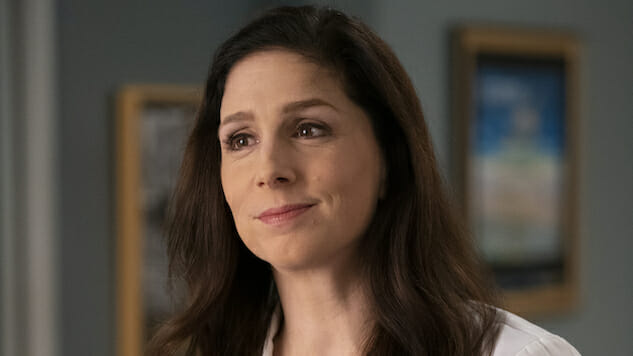Shoshannah Stern on Portraying Grey’s First Deaf Doctor, and Helping Shape the Role
"As a deaf woman I've had lots of experience being on the other side of the medical industry. None of it is good," Stern shares.
Photo Courtesy of ABC
In its 16 seasons, ABC’s Grey’s Anatomy has proven that it’s more than just a vehicle to showcase hospital staff hookups. Whether it’s showing that May-December romances aren’t just with older men and younger women, had frank conversations about sexual assault survival, or given our Assistant TV Editor some hope about the medical profession, it’s endured and remained endearing because it is a great drama that also happens to be a medical drama.
On Thursday, Grey’s will break ground once again with the episode “Save The Last Dance For Me.” That’s when This Close co-creator and co-star Shoshannah Stern starts a multi-episode arc as Dr. Lauren Riley, a deaf diagnostician—a rarity not just for the show, but for the genre of television in general (Grey’s has had deaf patients before; historians for the Paley Center For Media had no record of a deaf doctor on a medical show although the California Association for the Deaf has stated that Phyllis Frelich appeared on two episodes of NBC’s ER).
For Stern, this moment is something she’s literally been dreaming about; telling Paste via a conversation on Google Hangouts that “I just always had it in my head that I wanted to be a doctor on Grey’s. I’d even have dreams about it and then I’d wake up and be like, ‘aww, nuts, that didn’t actually happen.’”
It’s also a part she had to make happen for herself. The alum of such shows as The CW’s Supernatural and CBS’s Jericho says she doesn’t think she’s gotten a part through auditioning since perhaps she was on the Showtime dramedy Weeds. This one came about because she’d read Grey’s showrunner Krista Vernoff’s powerful The Hollywood Reporter guest column about the decision for the members of the Writers Guild Association to split with their agents, and approached her after the two spoke on a panel about inclusion hosted by the Television Academy.
“One of the goals I set for myself recently, both in my personal and professional life, was just to seek out and find other women,” Stern says.
Her character is similarly as fearless. She bursts into the series, taking charge of a situation that’s gotten out of control while also never bothering to let people pause and catch up to the fact that she’s deaf. During Thursday’s episode, she’s described as “reckless” and “cavalier” by another doctor: terms used to praise male characters as much as they are to demean female ones.
“She’s a smart, independent, strong woman who’s highly respected and sought after in her field,” says Grey’s executive story editor Tameson Duffy, who wrote Thursday’s episode. “She’s all business and no-nonsense because, you know, these are stakes of life and death here. We loved this idea of her just being this kick-ass woman and doctor and person.”
Stern’s fine with this because “as a writer who usually writes female characters who are deaf, for obvious reasons, I think people often expect them to be overly appeasing and pliable. But in a job like that, there literally isn’t time to make sure that your personality is making everyone else in the room comfortable. So that was really refreshing and exciting to play.”
Alternatively, Duffy says she chose to not make other characters in the episode have huge reactions to Riley’s disability or treat her different as a result of it because “on Grey’s, diversity just is. We don’t need to comment on it. It’s important that we represent it.”
“She is a doctor who happens to be deaf,” Duffy says. “The focus isn’t on her being deaf … That’s how we like to handle it on Grey’s. It isn’t that someone is different or diverse. That just is the reality of the world.”
Stern helped the Grey’s crew develop the character, coming to the writers’ room loaded down with evidence and statistics that she also peppered into our interview (“disabled people are simultaneously the largest minority and the most underrepresented,” she reminds, pointing to the Center for Disease Control’s findings that one in four U.S. adults live with a disability as well as the sad reality that characters with disabilities are frequently played by able-bodied actors).